Select Language

The World Bank has released a report titled "Safety First" which highlights the significant economic impact of crime on South Africa. The report reveals that crimes cost the country more than 10% of its Gross Domestic Product (GDP) annually. This cost comes in various forms such as transfer costs, spending on protection, and opportunity losses, all of which pose challenges to the nation's fiscal sustainability.
The World Bank's analysis points to a worrying trend in South Africa's crime statistics. Before the pandemic, the country experienced an average of 3,600 violent crimes per 100,000 people and had a homicide rate in 2021 that was six times higher than that of its peers, at 41.9 per 100,000 individuals. As of 2023, South Africa ranks seventh on the Global Organised Crime Index, reflecting a sharp increase in organized criminal activity.
The ripple effects of high crime rates are felt across various sectors:
Businesses, especially small enterprises, face inflated operating expenses due to high protection costs against crime. Additionally, direct losses from criminal activities stifle the private sector's dynamism.
Households suffer from deepened income inequality due to opportunity costs associated with crime.
The public sector is under pressure as resources are diverted from developmental initiatives to policing efforts, impacting fiscal sustainability.
Moreover, inadequate institutional strength hampers effective responses against the escalation of organized crime.
To address these issues, the World Bank recommends targeted policies focusing on reducing the homicide rate and combating organized crime. These measures are considered essential for mitigating the economic damage caused by criminal activities and fostering growth and equity in South Africa.
This article was generated with the support of AI and reviewed by an editor. For more information see our T&C.

By Leika Kihara
TOKYO (Reuters) -Japan's business-to-business service inflation accelerated in October as a tight job market lifted labour costs, underscoring a broadening of price pressures that could heighten the chance of a near-term end to ultra-loose monetary policy.
The services producer price index, which measures the price companies charge each other for services, rose 2.3% in October from a year earlier, up from a revised 2.0% gain in September, Bank of Japan (BOJ) data showed on Monday.
Information and communication, machinery repair and worker dispatching businesses saw fees increase from year-earlier levels due to higher labour costs.
A surge in inbound tourism drove up hotel fees 49.9%.
The data suggest Japan's economy is making progress towards achieving sustained rises in inflation accompanied by solid wage growth.
BOJ Governor Kazuo Ueda has said inflation has been driven mostly by cost-push factors and must shift to a more demand-driven rise in prices backed by higher wages for the bank to consider normalising its ultra-loose monetary policy.
His remarks have heightened market attention to developments in services prices, which most vividly reflect wages pressures companies face in their businesses.
With inflation having held above the BOJ's 2% target for more than a year, companies have faced unprecedented pressure to compensate employees with pay hikes to retain and lure talent.
Indications from businesses, unions and economists suggest the labour and cost pressures that had set the stage for this year's pay hikes - the largest in more than three decades - will persist heading into next year's key spring wage talks.
A Reuters poll in October showed nearly two-thirds of economists project that the BOJ will end its negative interest rate policy next year.
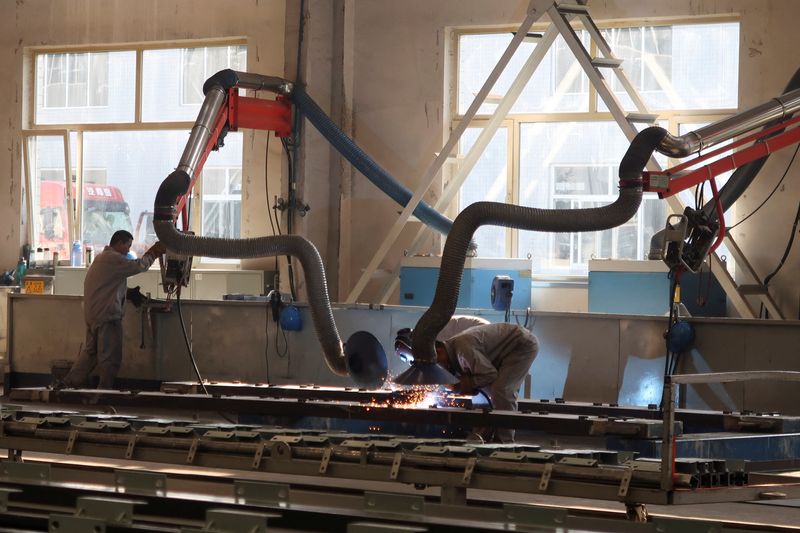
BEIJING (Reuters) -Profits at China's industrial firms fell 7.8% in the first 10 months of 2023 from a year earlier, official data showed on Monday, as a shaky post-pandemic economic recovery struggles to gain momentum.
The slide followed a 9% profit decline in the first nine months, National Bureau of Statistics (NBS) data showed.
China's economic recovery has been uneven this year, with a brisk start in the first quarter fading quickly in the second before gaining momentum in the third.
Last month's mixed picture only added to the uncertainty as prolonged distress in China's property sector, local government debt risks, soft domestic and global demand, and geopolitical tensions have unnerved investors and bruised corporate profits.
Facing a double whammy of macro headwinds and supply glut, LONGi Green Energy Technology Co, a major domestic solar energy manufacturer, saw its third quarter net profit plummet 44.1% to 2.5 billion yuan ($346.7 million).
With a burst of policy support measures since June having had a modest effect on reviving growth, policymakers are under rising pressure to roll out more stimulus, especially as China faces mounting debt risks and structural challenges.
"Transforming the economic growth mode is more important than pursuing a high growth rate," China's central bank governor said in a speech this month, suggesting an urgent need for longer-term structural reforms as investment-led growth loses steam.
State-owned firms posted a 9.9% decline in earnings in the first 10 months, foreign firms recorded a 10.2% slide and private-sector companies saw profits down 1.9%, according to a breakdown of the NBS data.
Industrial profits data covers firms with annual revenues of at least 20 million yuan ($2.74 million) from their main operations.
($1 = 7.2922 Chinese yuan)

Investing.com -- With investors on tenterhooks over when global interest rates might start to fall, upcoming inflation data this week will be in focus. OPEC+ meets to discuss oil output cuts and data from China will give fresh insights on the economic outlook for the world’s number-two economy. Here’s what you need to know to start your week.
U.S. inflation data
On the heels of October's unchanged reading on consumer price inflation, markets will be hoping that another U.S. inflation report on Thursday will bolster the case for an end to Federal Reserve rate hikes.
The Fed’s preferred inflation gauge, the personal consumption expenditures price index, is expected to have risen 0.1% in November. The PCE index rose 0.4% in September, matching the rise in August.
The core reading, which strips out food and fuel costs and is considered a better gauge of underlying inflation, is expected to have risen 3.5% on a year-over-year basis.
Other economic data out during the week includes a consumer confidence index for November on Tuesday - October's reading showed a third straight monthly decline. There will also be the first revision of third quarter GDP, figures on new home sales for October, the weekly report on jobless claims and the Fed’s Beige Book.
Year-end rally?
Signs the U.S. stock market rally is broadening from the so-called Magnificent Seven of mega-cap growth and technology companies is bolstering investor hopes for a rally through year-end.
The Magnificent Seven group of stocks is made up of Apple (NASDAQ:AAPL), Microsoft (NASDAQ:MSFT), Alphabet (NASDAQ:GOOGL), Amazon (NASDAQ:AMZN), Nvidia (NASDAQ:NVDA), Meta (NASDAQ:META) and Tesla (NASDAQ:TSLA) and they collectively hold a 28% weight in the S&P 500 index. They make up nearly 50% of the weighting of the Nasdaq 100, which is up nearly 47% for the year to date.
Equities have risen sharply, with the broad S&P 500 advancing approximately 10% over the last three weeks, fuelled by falling Treasury yields and cooling inflation readings that could signal the end of Federal Reserve rate hikes.
Investors will get further readings of inflation and consumer confidence (see above) during the week, but stronger-than-expected data could spur a selloff in Treasuries, sending yields higher.
OPEC+ meeting
Oil fell on Friday, but prices notched their first week of gains in over a month ahead of a meeting later this week to decide on production cuts in 2024.
Brent crude futures settled down 1.4%, at $80.23 a barrel, while crude oil WTI futures fell 2.5%, from Wednesday's close to $75.17. There was no settlement for WTI on Thursday owing to the U.S. Thanksgiving holiday.
The gains for the week came as OPEC+ prepares for a meeting on Thursday that will have output cuts high on the agenda after recent oil price declines on demand concerns and burgeoning supply, particularly from non-OPEC producers.
The OPEC+ group, comprising of the Organization of the Petroleum Exporting Countries and allies including Russia, surprised the market last Wednesday by delaying its scheduled Nov. 26 meeting to Nov. 30 after producers struggled to reach a consensus on output levels.
Eurozone inflation
The Eurozone is to publish inflation data on Thursday that is expected to point to price pressures moderating again in November.
Consumer price inflation is expected to increase at an annual rate of 2.8%, easing slightly from 2.9% the prior month. Underlying inflation is expected to slow to 3.9%.
But despite indications that inflation is cooling, European Central Bank President Christine Lagarde has warned that borrowing costs will need to stay restrictive for longer.
Last Thursday, the minutes of the ECB’s latest policy meeting indicated that officials agree they should be ready to hike again if needed.
Inflation is only forecast to return to the ECB’s target of 2% in the second half of 2025.
China outlook
China is to release official purchasing manager indexes for November on Thursday, with investors on the lookout for any signs of a recovery in the world’s second largest economy.
In October data showed that factory activity fell back into contraction despite a raft of government measures aimed at shoring up the faltering economy, which has been hit by weak consumption and a crisis in the country's debt-laden property sector, which comprises around a quarter of gross domestic product.
China's economy grew at a faster-than-expected 4.9% in the third quarter, But Beijing still faces an uphill battle to achieve its annual growth target of around 5%.
--Reuters contributed to this report
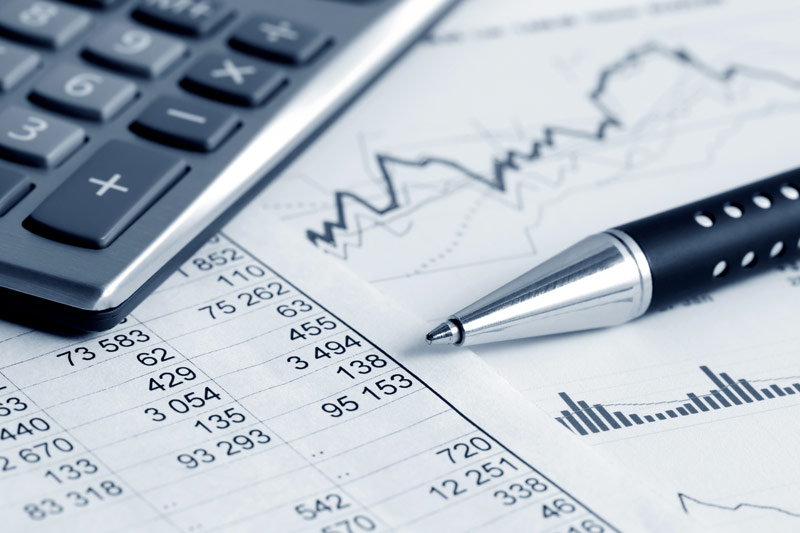
LONDON - The Bank of England's chief economist, Huw Pill, has recently stressed the importance of maintaining a strong approach to combat persistent high inflation, even as signs of an economic slowdown emerge. Despite October's inflation rate sitting at a significant 4.6%, well above the Bank's 2% target, Pill pointed to supply-driven factors as the main drivers of continued price pressures.
Pill refrained from making specific interest rate predictions in his interview but advocated for the continuation of tight monetary policy. This stance is in light of stubborn inflation within the service sector and strong wage growth. Furthermore, the Bank of England's downgraded assessment of the UK's supply capacity suggests limited potential for growth without risking further inflation, underlining the need for ongoing vigilance by the Monetary Policy Committee (MPC).
While Pill has avoided forecasting interest rates, he acknowledged that financial market expectations for rate cuts starting next summer are plausible, with current rates at 5.25%. Nonetheless, Governor Andrew Bailey has indicated that investors might be placing too much emphasis on recent drops in headline inflation figures.
The MPC has been warned against relaxing its stringent monetary policies prematurely, as doing so could undermine efforts to stabilize prices. The Bank's steadfast approach reflects its commitment to reining in inflation while navigating the delicate balance between supporting economic activity and preventing a surge in inflationary pressures.
This article was generated with the support of AI and reviewed by an editor. For more information see our T&C.
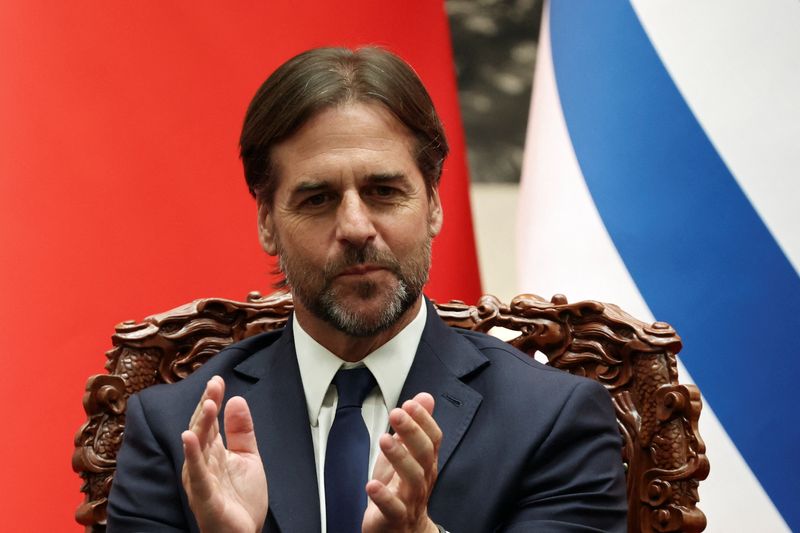
By Joe Cash
BEIJING (Reuters) -Uruguayan President Luis Lacalle Pou and Chinese Premier Li Qiang are keen to keep working on a bilateral free trade agreement as well as pursue one between China and the wider Mercosur trade bloc, according to a joint statement.
The statement follows a Thursday meeting in Beijing between the two and comes after China and Uruguay this week upgraded their bilateral relationship to a "comprehensive strategic partnership," elevating Montevideo's ties with Beijing to those of Argentina and Brazil.
Beijing is seen as particularly interested in an FTA with Mercosur as that could put pressure on Paraguay, the last remaining South American country with ties to Taipei, to rethink its links with Taiwan which China considers part of its territory.
The statement said that Uruaguay and China were committed to pursuing a bilateral FTA and noted that a joint feasibility study had been completed.
"At the same time, the two sides are willing to promote China-Mercosur FTA talks," it added.
Lacalle Pou first proposed a bilateral FTA with China in 2021 to secure similar opportunities for its exporters as those enjoyed by Chile, Costa Rica, Ecuador and Peru - countries which have secured tariff-free access to the world's second-largest economy.
"Uruguay is firmly committed to close relations with China and active participation in the Belt and Road Initiative (BRI)," Lacalle Pou said, according to a readout of the meeting in Chinese state media.
Uruguay was also "willing to... accelerate establishing an FTA between Uruguay, Mercosur and China," Chinese media quoted him as saying.
But Uruguay faces stiff opposition from fellow Mercosur members Argentina, Brazil and Paraguay who want their bloc to settle an FTA with Europe instead.
Last November, they warned they could take "measures" against Uruguay if it forged ahead with its plans to unilaterally negotiate an FTA with China.
Uruguay has also applied to join a major trans-Pacific free trade pact that China also aspires to join, but both Montevideo and Beijing must overcome significant political hurdles before that is possible.
Li was quoted as saying that China and Uruguay should take the signing of Belt and Road Initiative cooperation documents as an opportunity to promote a continuing increase in bilateral trade.
China accounted for 27% of Uruguay's exports in 2022, United Nations Comtrade data shows.
At present, Uruguayan beef, which constituted two-thirds of those exports to China, is subject to a 12% tariff.
By comparison, other major beef exporters Australia and New Zealand, which have FTAs with China, pay tariffs at 3.3% and 0%.
Uruguay came close to signing an FTA with the United States in 2006, but its government at the time eventually rejected the deal over fears of expulsion from Mercosur if it did so.
According to a study conducted by the National Meat Institute of Uruguay in 2021, if China signs an FTA with Uruguay, the meat industry can implement a 0% preferential tariff, which will reduce tariffs by $150 million.

BEIJING (Reuters) - China hopes Russia will give policy support for Chinese automobile enterprises to produce, sell and operate in Russia, Chinese state media cited China's ambassador to Russia as saying on Friday.
China will promote Chinese and Russian integration in the automotive industry supply chain, Ambassador Zhang Hanhui was cited as saying.
China is also willing to continue to give full play to the supply advantages of China's automobile industry and continue to develop models adapted to the needs of the Russian market, he said.
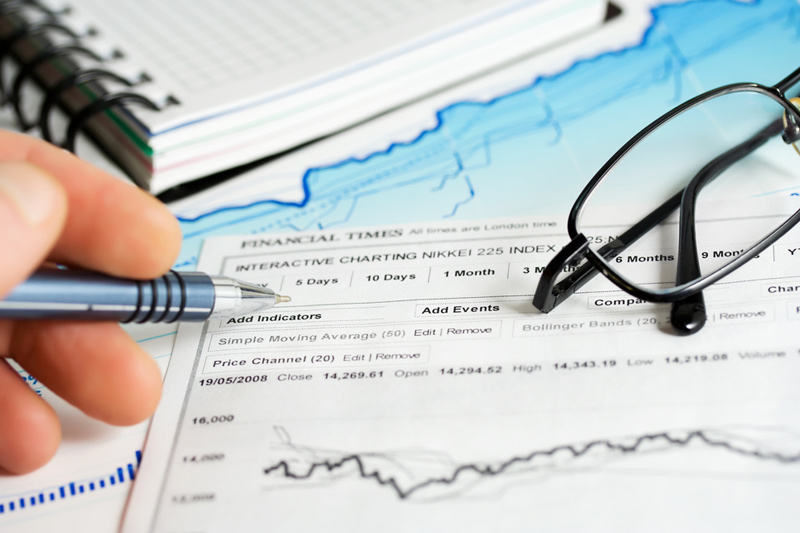
The GBP/USD currency pair reached a ten-week peak, approaching the 1.2550 mark, buoyed by unexpectedly strong UK Purchasing Managers' Index (PMI) data. The latest figures released showed both the Services and Composite indices indicating economic expansion with readings of 50.5 and 50.1 respectively, surpassing forecasts that predicted no change from previous numbers.
Market analysts are now turning their attention to the upcoming US Manufacturing and Services PMIs as trading resumes after the Thanksgiving holiday. There is a consensus that the Manufacturing index might show contraction with a prediction of 49.8, while Services are expected to experience a slight dip to 50.3. These projections come as market participants return in reduced numbers due to shortened trading hours.
In technical analysis, the GBP/USD pair shows that resistance is forming just below the recent highs, around the level of 1.2575. Meanwhile, support is taking shape near the recent lows in the vicinity of 1.2400. Investors and traders are closely monitoring these levels as they could indicate future movements in the currency pair's value.
As global markets await the release of US PMI data, the strength of the pound against the dollar serves as an indicator of investor sentiment towards the economic outlook of both nations. The positive UK data has provided some optimism about the resilience of the British economy amid global economic challenges.
This article was generated with the support of AI and reviewed by an editor. For more information see our T&C.
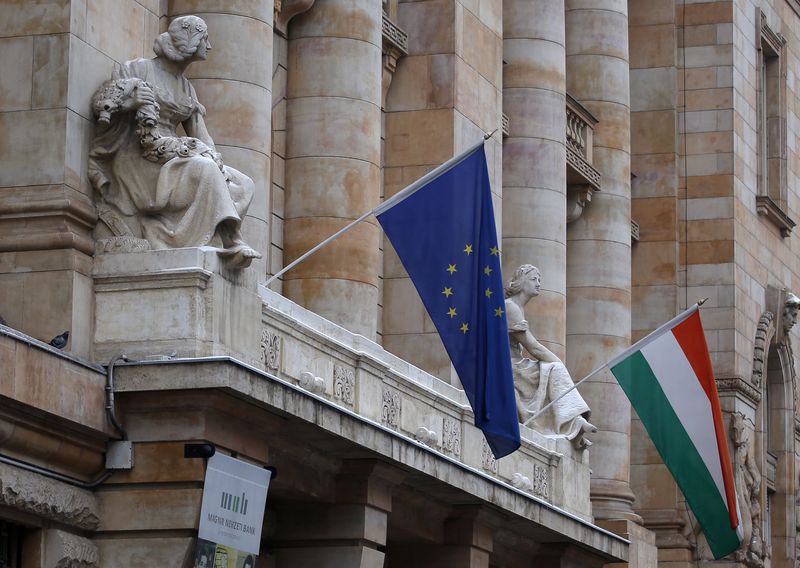
By Gabriela Baczynska
BRUSSELS (Reuters) -The European Union executive on Thursday approved 900 million euros ($1 billion) in advance payments to Hungary under its hitherto frozen share of recovery funds, as the bloc seeks to overcome Budapest's veto of aid to Ukraine.
The EU's Brussels-based executive, the European Commission, locked Hungary out of the bloc's post-pandemic economic stimulus due to concerns over corruption and backpedalling on democratic checks and balances under veteran Prime Minister Viktor Orban.
In turn, Hungary has blocked EU decisions otherwise expected next month to grant Ukraine 50 billion euros in economic aid through 2027 and start accession talks with Kyiv. Budapest also stalled a plan to extend 20 billion euros in EU military aid to Kyiv, and is against sanctions over Russia for waging the war.
EU support is crucial to Ukraine, which has been struggling to push back a full-scale Russian invasion since February 2022.
Orban, who touts his ties with Moscow, says Hungary is no more corrupt than other EU countries.
Budapest has rolled out a billboard campaign vilifying the European Commission, and Orban's Fidesz party is pushing a bill on "protecting national sovereignty" from foreign meddling - both moves raising the stakes in Hungary's clashes with the EU.
A Budapest currency trader put the muted reaction on the forint to the news partly on the U.S. market holiday for Thanksgiving on Thursday.
"Also, markets understand that this is only the beginning, and may need a bigger impulse to put the forint on a firming path," said the trader, who declined to be named.
BARGAINING WITH HUNGARY
Hungary's chief EU negotiator, Tibor Navracsics, was quoted by the state news agency MTI as saying Budapest will continue negotiating with Brussels to unlock "all the EU funds we are entitled to as soon as possible."
The advance payments - which do not require meeting rule-of-law conditions otherwise attached to EU financial aid - come under RePowerEU, part of the post-pandemic EU stimulus meant to support energy transition away from fossil fuels.
EU officials said Hungary's amended recovery plan is worth a total of 10.4 billion euros over several years - or about 5% of Hungary's 2023 GDP - including 4.6 billion euros under RePowerEU: 0.7 billion euros in grants and 3.9 billion in loans.
EU officials said Hungary would use the RePowerEU money to modernise its electricity sector through smart metres and digitalisation of energy companies.
The Commission's decision on Thursday to give the nod to Hungary's amended recovery plan must now be approved by other EU countries, possibly as soon as during Dec. 8 talks among the 27 member states' finance ministers.
EU officials expected two payments of around 460 million euros each to follow next year.
The officials insisted Hungary must meet EU conditions on fighting corruption and ensuring judicial independence, among others, to access any more of the funds.
EU officials told Reuters last month that the bloc was considering unlocking aid for Hungary to win Budapest's support for Ukraine. More recently, however, sources involved in preparing a Dec. 14-15 EU leaders' summit to discuss Ukraine channelled increasing scepticism that Orban could be swayed.
($1 = 0.9168 euro)
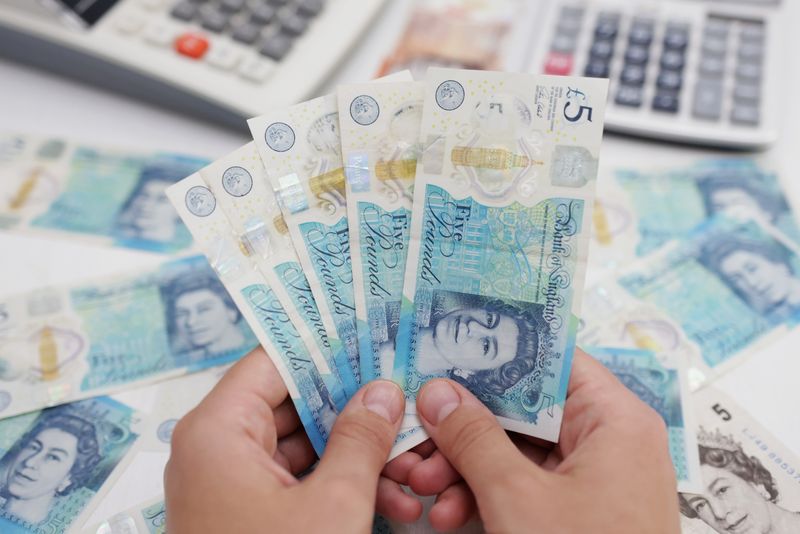
By Naomi Rovnick, Samuel Indyk, Lucy Raitano and Harry Robertson
LONDON (Reuters) -Britain's finance minister on Wednesday announced a raft of measures aimed at reviving the sluggish economy without upsetting markets, but a degree of caution over the outlook for borrowing and inflation rattled bonds and sterling.
Nerves about cuts to social security payments were minor. Traders had feared a broader set of hard-to-fund giveaways.
Sharply lower growth forecasts for 2024 kept sentiment on sterling tepid, while some pockets of the stock market got a fillip from business investment and tax relief measures.
This was Hunt's second Autumn Statement since he replaced Kwasi Kwarteng, who was fired last year in the wake of a mini-budget packed with under-funded tax cuts that unleashed UK market turmoil.
Investors cautioned that tax breaks would not be sufficient to raise business investment while UK interest rates stayed high.
"The country needs massive investment and the only way you are going to get that is if financing costs become much cheaper," said Leigh Himsworth, UK portfolio manager at Fidelity International.
BUSINESS BOOST
UK investors went into this budget concerned about a government doing badly in the polls seeking to raise its popularity with heavy spending that could increase inflation and ultimately interest rates - already at a 15-year high of 5.25%.
There was "a risk of reduced tax rates that would stimulate the consumer again at a time where the Bank of England has only just broken the back of services inflation," Monex Europe head of FX analysis Simon Harvey said.
But Wednesday, equity markets focused on Hunt's business boosts, such as a move to make full expensing on investment permanent. Shares in BT which is investing in a huge new fibre network, were 4.1% higher on the day.
The UK's domestically-focused FTSE 250 index on Wednesday was last up 0.7% and comfortably outperforming the large-cap FTSE 100. "Full expensing should be a major lift to UK industry and to the longer term-macro outlook where improving the UK’s woeful pace of productivity growth is critical," said Philip Shaw, chief economist, UK at Investec. UK stock markets have underperformed their European and U.S. peers in 2023. The FTSE 100 index 12-month forward price-to-earnings ratio is around 10.7, about half that of U.S. stocks, with Hunt's budget unlikely to move the dial too far.
"Ultimately, the budget does not change our view that the UK economy faces a high risk of stagflation, which keeps us cautious and highly selective on UK domestic stocks," said Thomas McGarrity, head of equities at RBC Wealth Management.
BREWERS FIZZ, BUILDERS FLAT
Hunt also froze alcohol duties until August 1 2024. Shares in brewer Fuller, Smith & Turner rose 2.2% after the announcement, with pub operator Marston's, up 2.1%.
But the budget failed to provide a bazooka that would give Britain's homebuilders a boost, instead introducing smaller measures to unlock bottlenecks in the planning system.
"This doesn't feel like it's the sort of thing that's going to move the needle," said Oli Creasey, property equity analyst at Quilter Cheviot.
"It's not planning that's stopping them from selling homes right now, it's affordability."
Britain's homebuilding stocks, which have underperformed since the BoE began raising rates in 2021, closed down 0.5%, having been up around 1.6% before the budget.
GILTS PRESSURED
British bond yields rose after Hunt's statement, as investors reacted to a much smaller cut than expected to gilt issuance plans.
The Debt Management Office said on Wednesday it planned to sell 237.3 billion pounds ($295.7 billion) of gilts in 2023-24. In a Reuters poll, bond market participants had predicted the remit would be 222.8 billion pounds.
Britain's 10-year gilt yield finished up 6.8 basis points on the day at 4.175%, above a session low of 4.052%.
It hit a 15-year high of 4.755% in August, but has since dropped along with yields around the world as global growth and inflation data has cooled. Yields move inversely to prices.
STERLING SOGGY
The pound struggled to gain any traction on the back of Hunt's budget. It fell by as much as 0.7% against the dollar after data suggested greater strength in the U.S. economy and was lower against the euro.
"Markets are still pricing in a 50% chance of a (UK) rate cut by June (which) suggests investors are not concerned about any inflationary implications on the back of today's announcements," OANDA strategist Craig Erlam said.
Goldman Sachs strategists had warned ahead of Hunt's statement that "a more substantial fiscal loosening at this stage would risk raising inflation."
($1 = 0.8025 pounds)

